Here it is, my first espresso machine! After a year of exploring the world of coffee with a moka pot, V60, and French press, I felt it was finally time to dive into the full espresso experience.
After reviewing my options in a previous article about the best espresso machines for every budget, I’ve decided to go with the DeLonghi ECP 35.31.
In this article, we’ll explore why this machine could be a great choice if you’re new to coffee and espresso.
Why choosing the DeLonghi ECP?
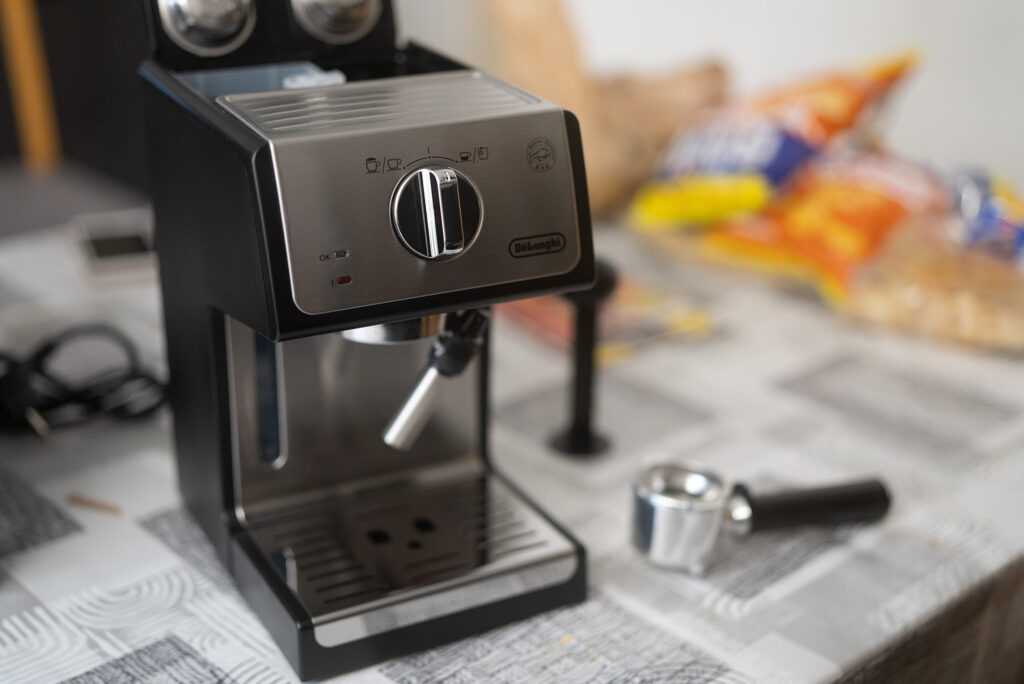
The DeLonghi ECP is known to be one of the best bang for your buck in the espresso world costing around 130-159 euros, even competing with premium offerings like the Gaggia Classic Pro which cost tree times more (499 euros).
For the price, you get a plastic body with some stainless steel accents, a stainless steel boiler instead of brass, and a 51mm portafilter instead of the standard 58mm.
The machine comes with a pressurized basket, which you’ll likely need to replace, and a Panarello steam wand that you might want to upgrade as well.
It’s worth noting that the Gaggia model also includes a 3-way solenoid valve, which helps prevent your portafilter from dripping once you stop the shot.
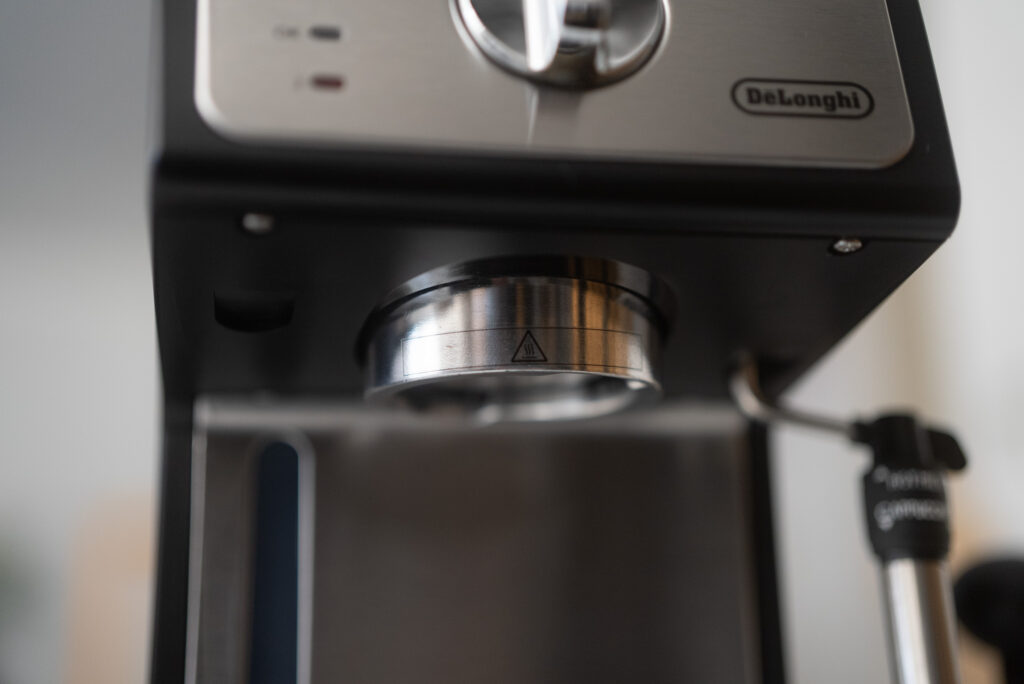
Unlike the DeLonghi Dedica, which uses a thermal block for on-demand hot water, this machine offers more consistency and is able to warm up both the group head and porta filter.
Compared to the DeLonghi Stilosa which is smaller and cheaper, it has a larger shower screen (52.4mm vs 42mm) for better distribution in theory.
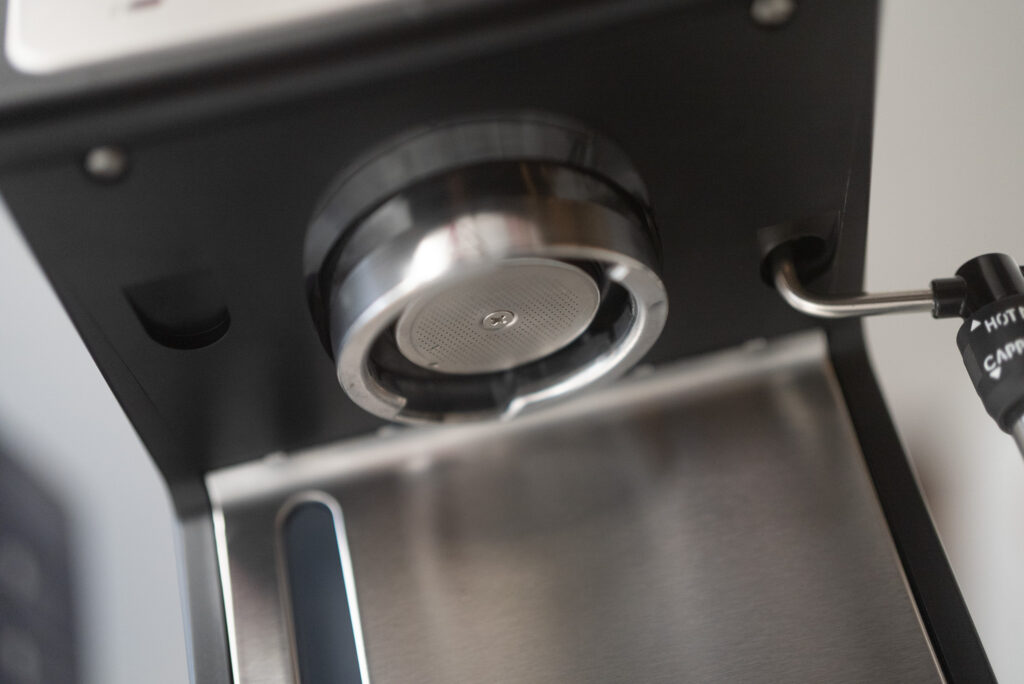
The reasons why the ECP might be a better fit
- 51mm basket is better for smaller dose between 14 and 16 grams per shot of double espresso
- Better temperature and extraction than the Dedica
- Heating group head
- More affordable
- Smaller size and weight compared to the Gaggia
- More clearance
- Better and larger shower screen than the Stilosa
- Better construction than the Stilosa
The ECP extra accessories to buy
- A bottomless 51mm porta filter
- Some zip tie to hold the rubber steam wand or a replacement
What are the different versions?
There are essentially three main versions of the ECP. While there have been more over the years due to upgrades, we will focus on the three current versions available for sale.
- The ECP 31.20 (North America) or 31.21 (Europe) : these versions are mostly made out of plastic and have the old steaming wand
- The ECP 34.20 (North America) or 35.31 (Europe) : these versions are made out of a plastic body with some stainless steel parts with the updated wand for the European version
- The ECP 3630 (North America) : This is the version has the body made out of stainless steel, the best version in my opinion.
To see the details about the different versions:
https://tomscoffeecorner.com/delonghi-ecp-whats-the-difference
Whats in the box?
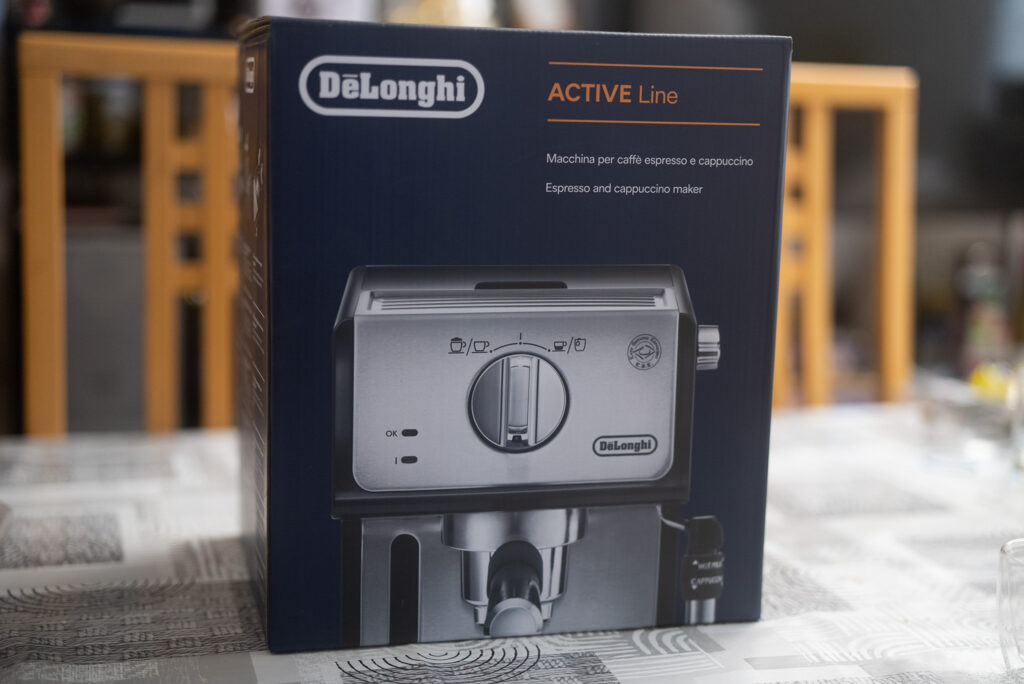
In the box you’ll find some essential accessories for the espresso machine to work neatly packed and including:
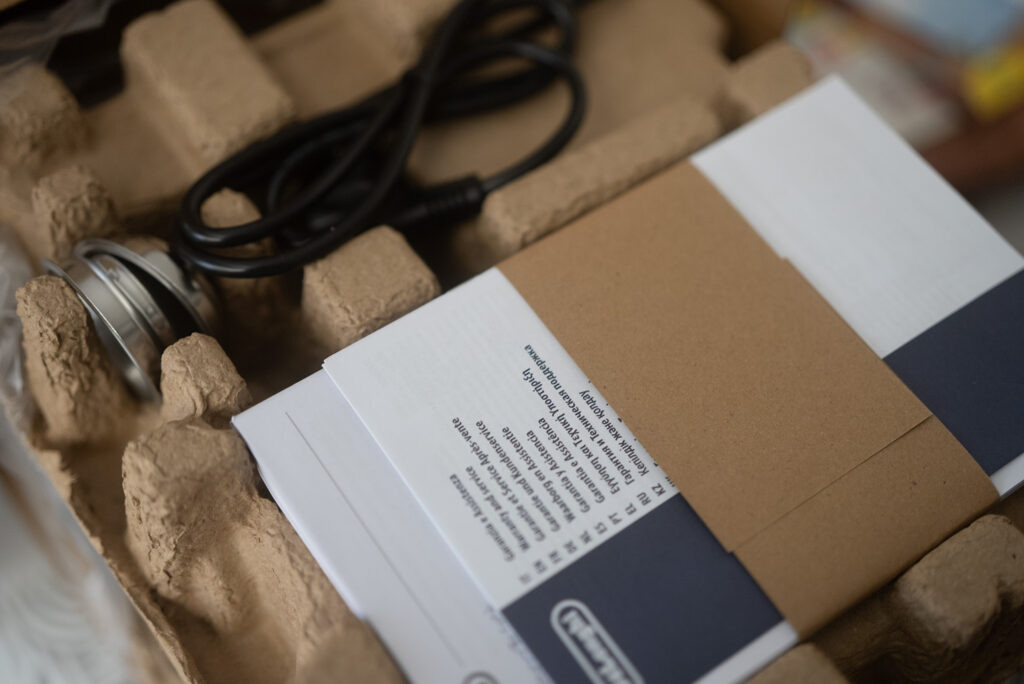
- A manual
- A 51mm pressurized porta filter
- 3 baskets (single espresso, double espresso, hot water)
- The espresso machine
- A dip tray with a floater
- A tray underneath to give you more clearance
- A removable water tank
- A tamping scoop
The included accessories
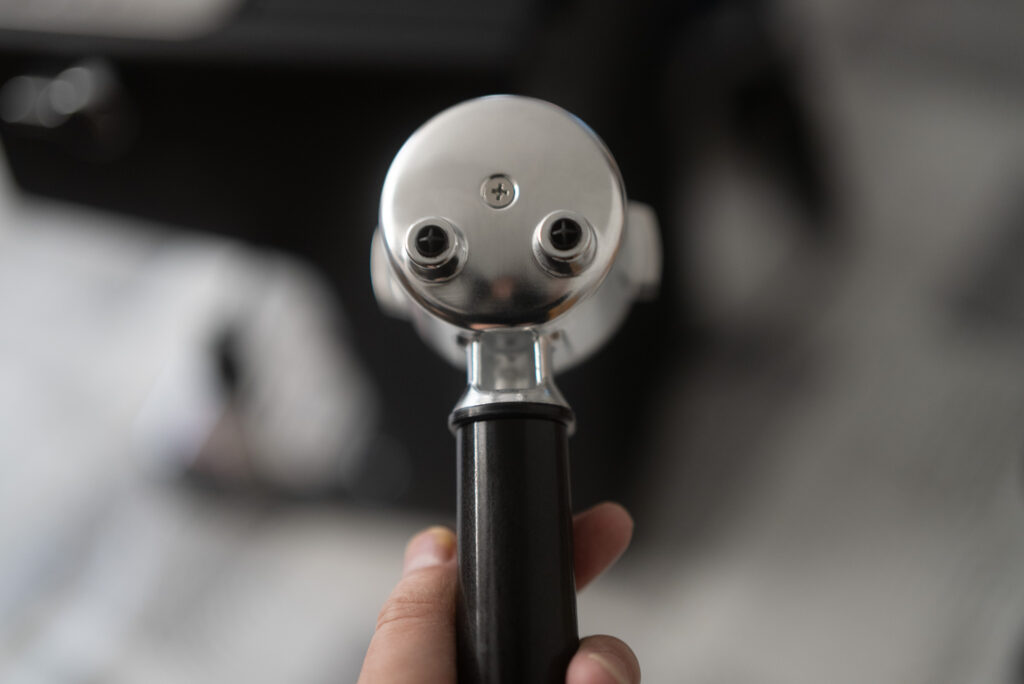
The portafilter is of decent quality, but since it’s pressurized, it will definitely need to be replaced. The baskets are made of stainless steel and are including a gasket that serves as a tool for removing the screen filter.
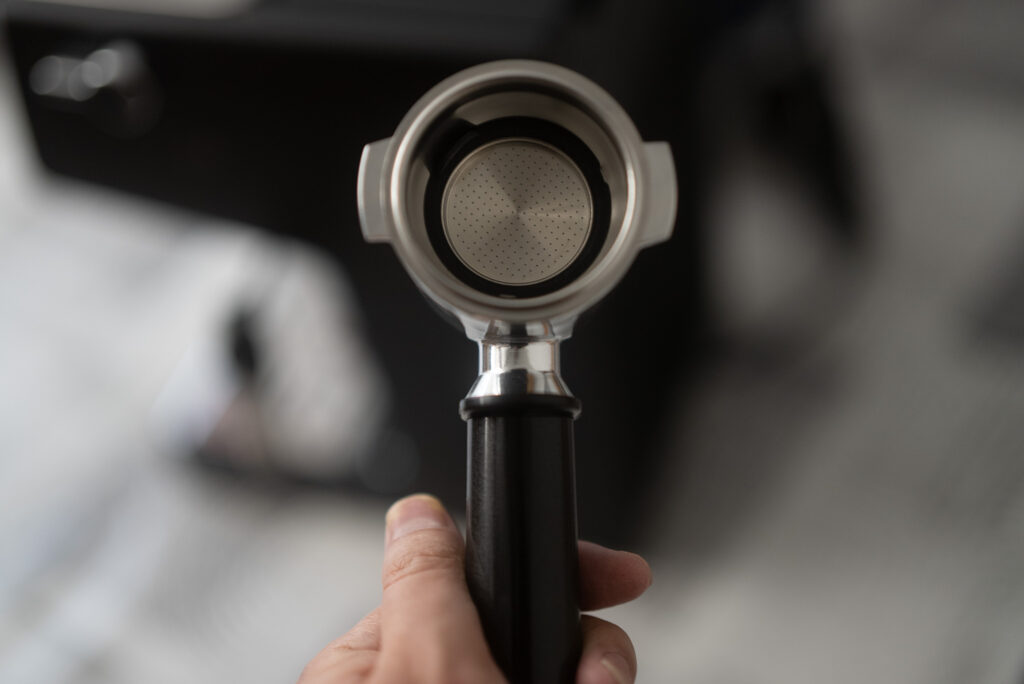
It’s actually a solid piece of equipment that has been updated with the Stilosa, though I appreciate that this model uses less plastic. The portafilter has two ears, compared to the three ears on the Dedica’s portafilter.
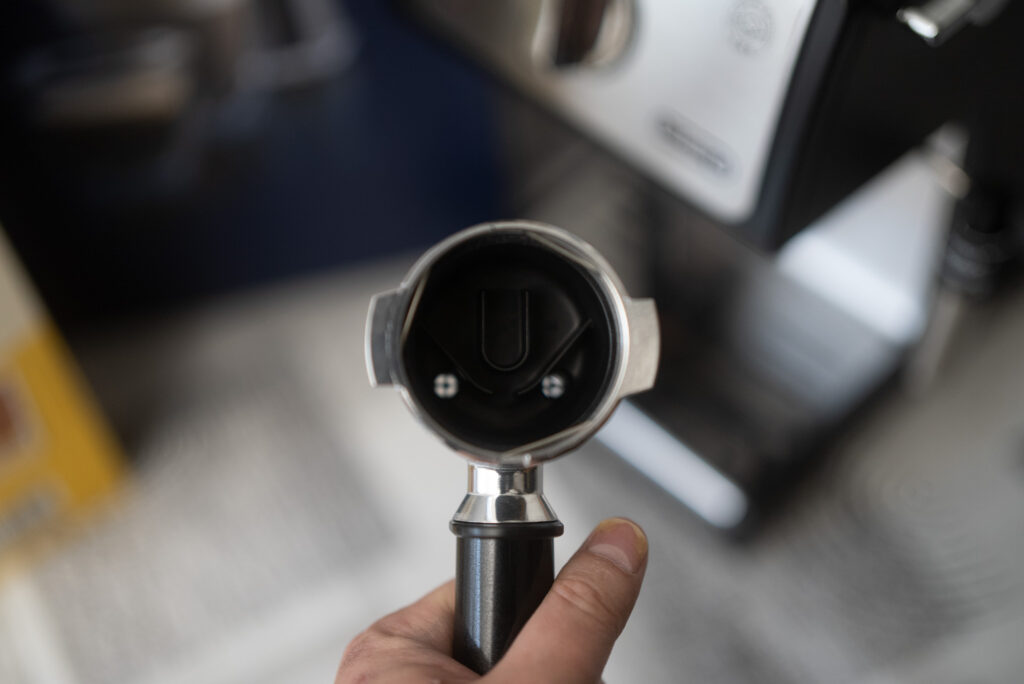
To be fair, this version also features a plastic bottom that helps circulate the coffee extraction through the two holes. The baskets are easy to insert and remove, and they stay securely in place when you’re discarding the puck.
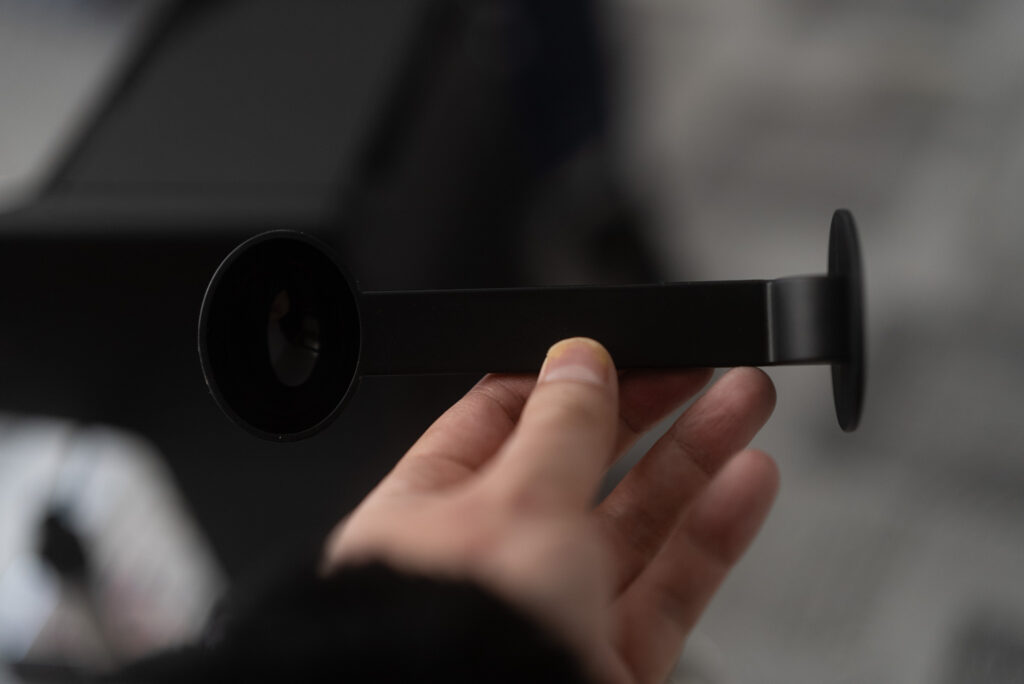
The scooping tamp is clearly made of plastic and isn’t ideal for a professional barista experience, but it gets the job done if you don’t have a proper tamper.
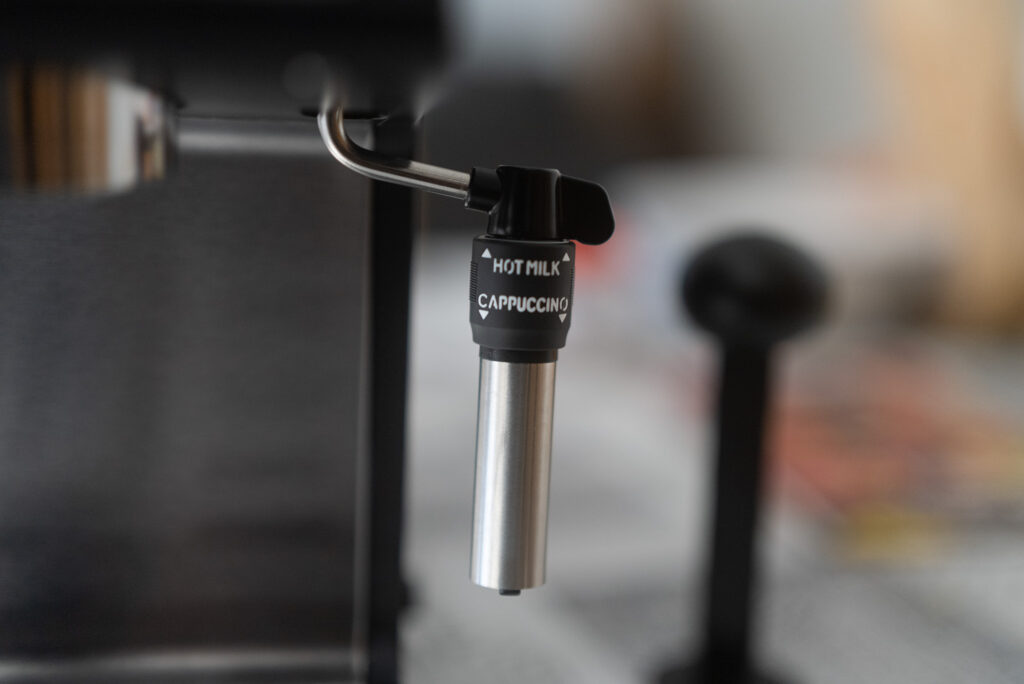
The updated Panarello steam wand offers two settings to adjust the amount of air added to your milk by moving a switch. It looks better than the old version. This particular one also have a ball joint where you can move the want in any direction.
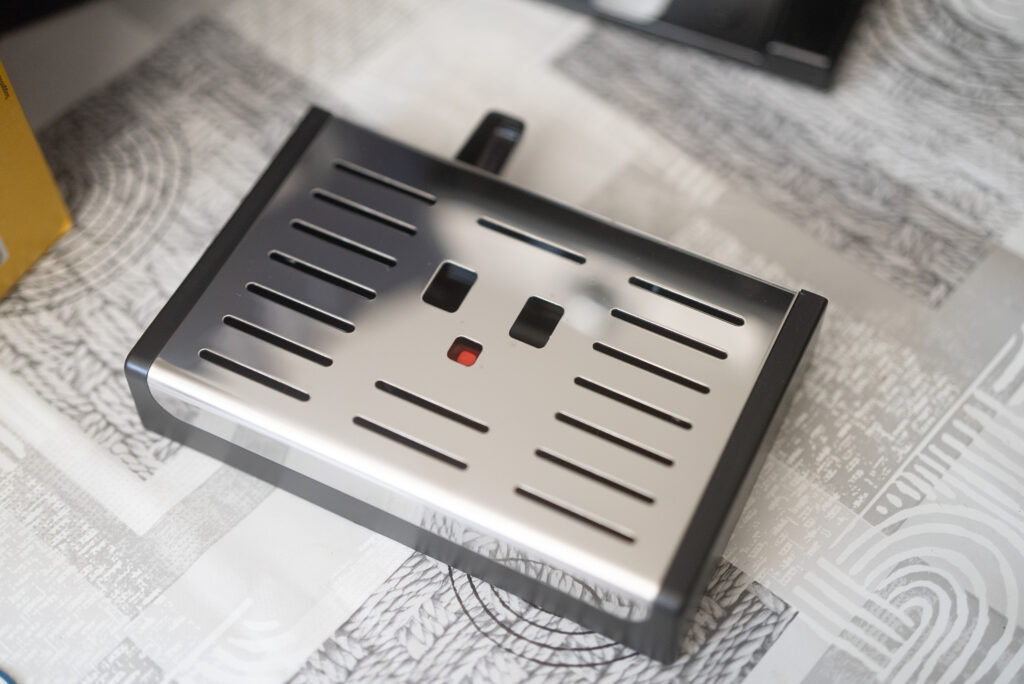
The drip tray mesh is made of stainless steel, which adds a nice touch, and includes a floater to indicate when it’s almost full. While this part isn’t the most crucial, it’s reassuring to know that it won’t break if dropped, although modern PVC is also quite resistant to heat and impact. I wish the tray mesh had a brushed finish like the rest of the steel parts.
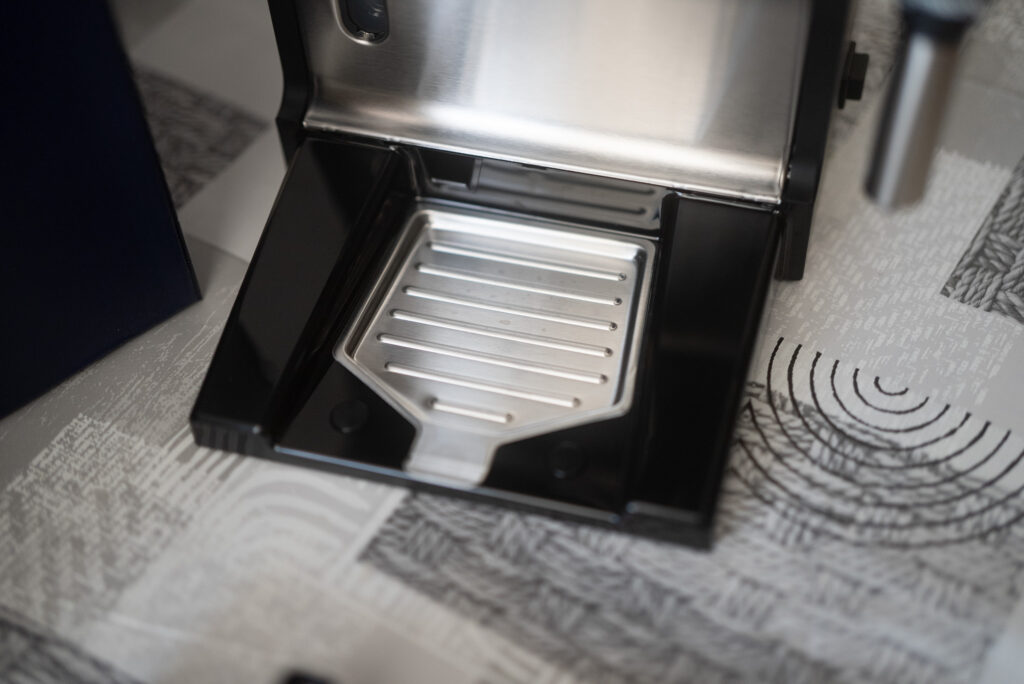
Beneath the drip tray mesh is a second tray, also made of stainless steel, which provides extra clearance when using a taller cup. I think this is a nice feature, offering the option whenever needed.
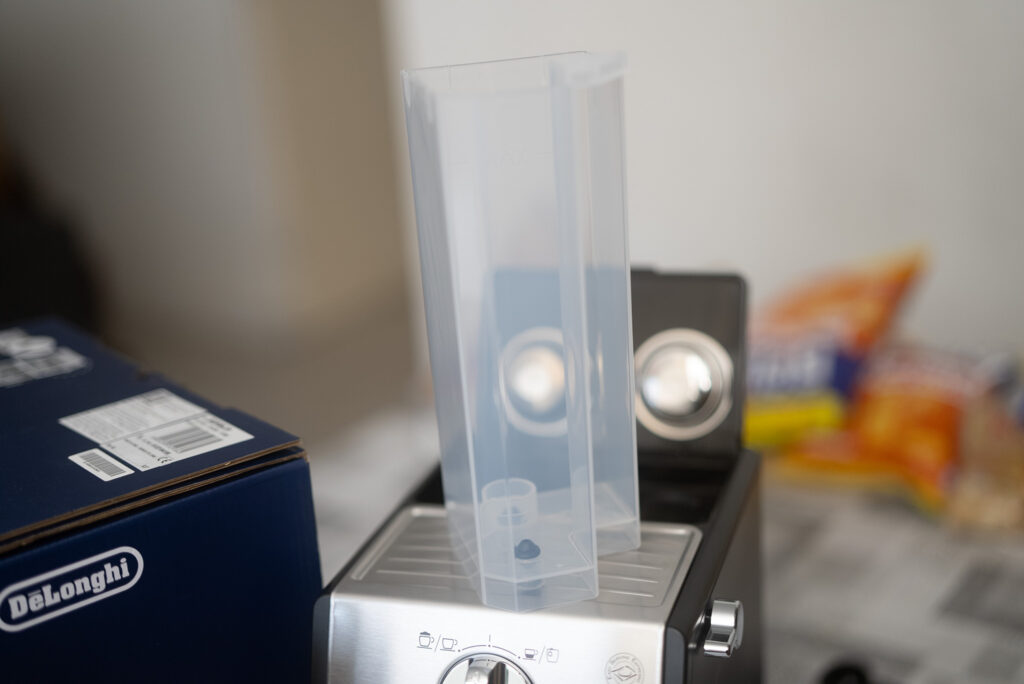
The water tank is transparent and removable, which makes cleaning easy. However, the only issue I have is that it’s difficult to see the water level unless it’s well-lit.
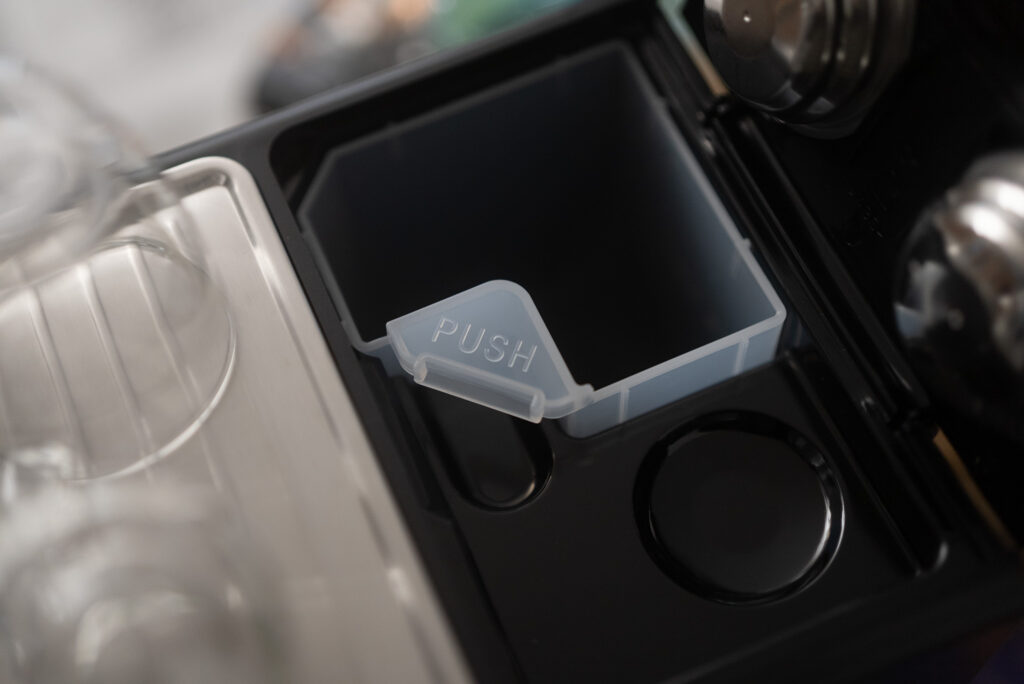
Additionally, if the water tank is full, it’s nearly impossible to tell just by looking through the machine’s window whether it’s empty or full. I tend to refill only up to where I can see the water for better visibility.
The features
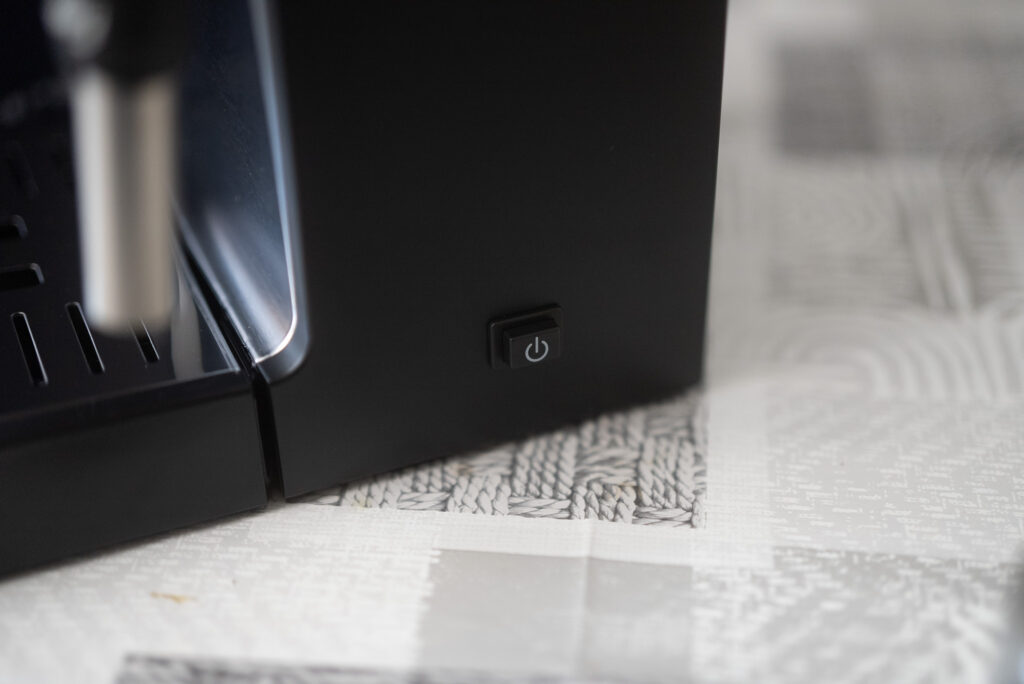
This specific European model has an automatic on/off switch due to regulations, which turns the machine off after 10 minutes of inactivity. I think this is a smart feature, as it’s easy to forget to turn off the espresso machine, potentially leading to accidents. The only downside is that it may make it difficult for users to allow the boiler and group head to fully reheat for more than 10 minutes.
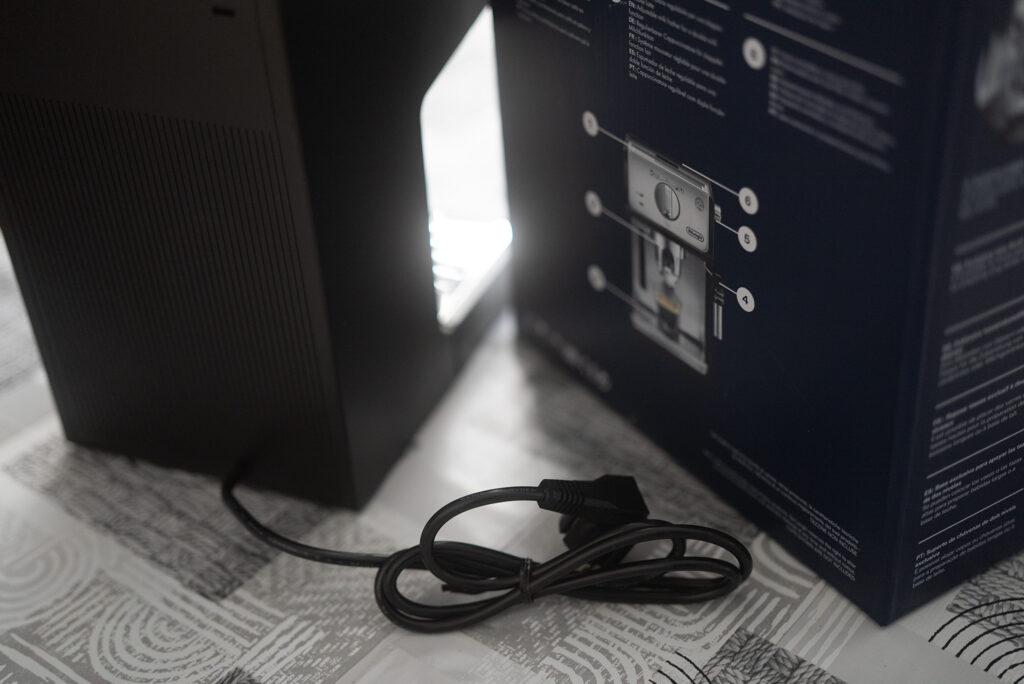
In my opinion, the Delonghi ECP comes with a short cable, meaning it will need to be placed close to an electrical outlet or multi-socket adapter.
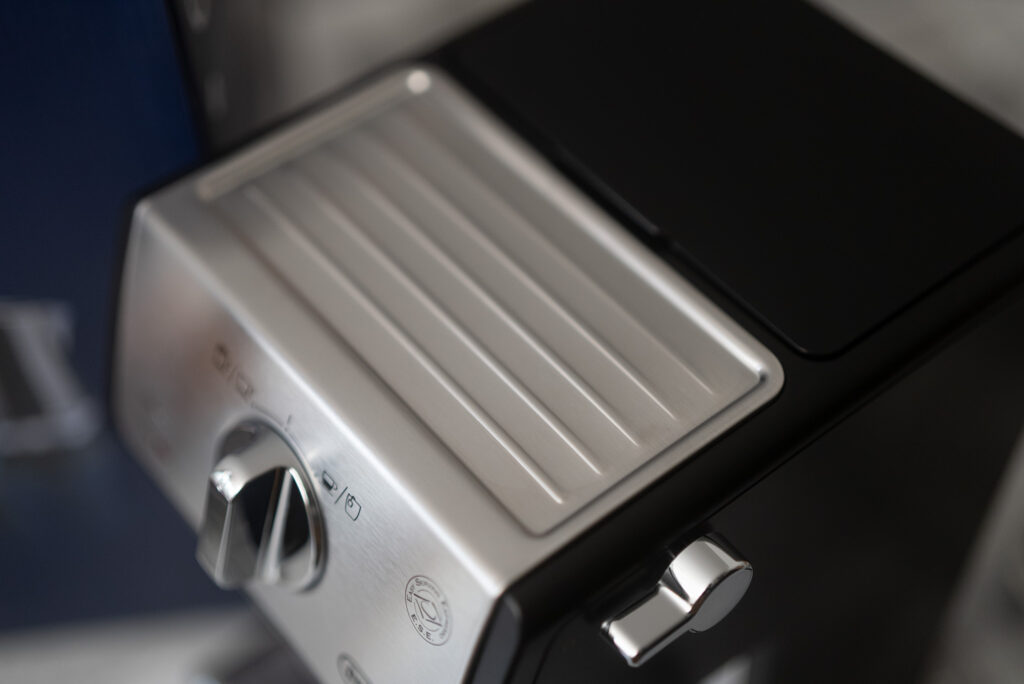
With its metal facade and cup warmer, this model can hold and reheat your espresso cups, which is a great feature for maintaining temperature consistency.
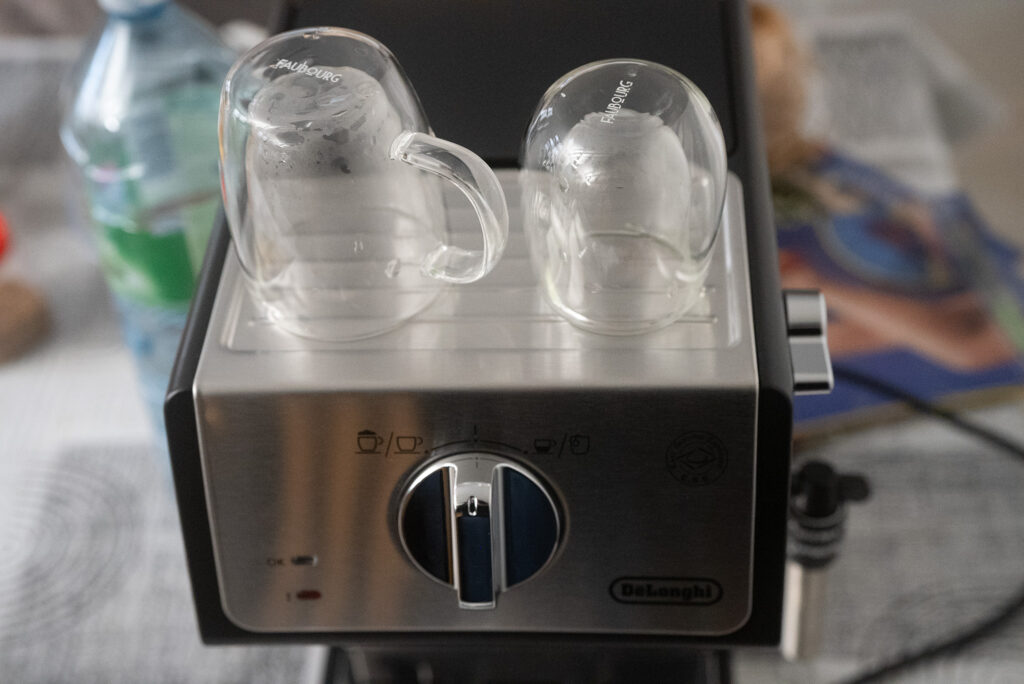
The cup warmer is somewhat small, but considering this is a very compact machine, there’s not much that can be done given the limited space.
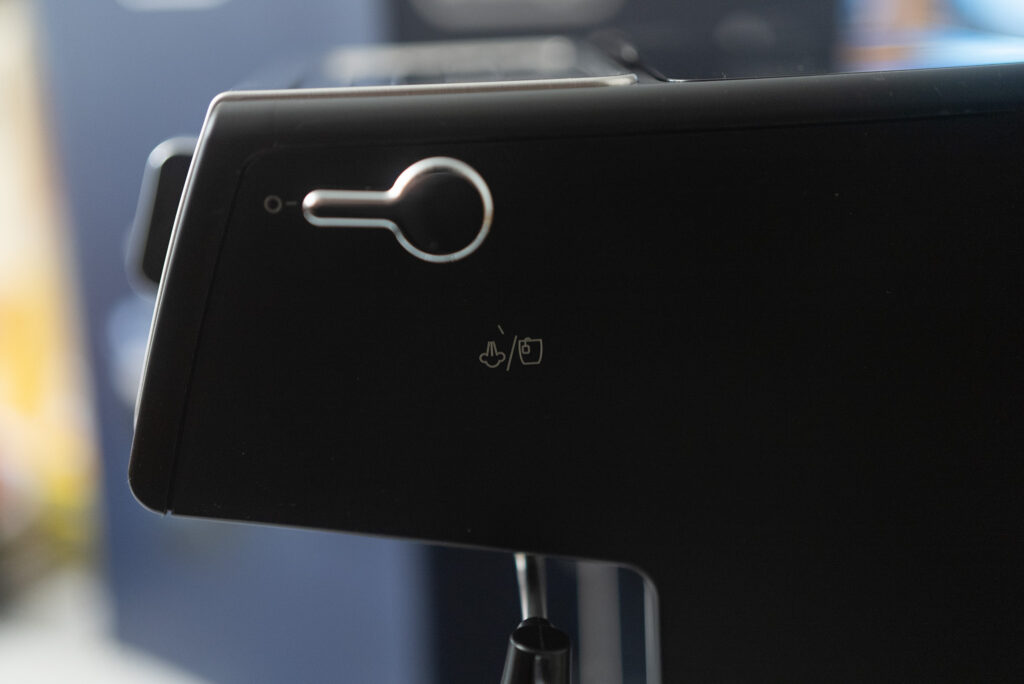
Some people have mentioned that the steam lever is simply on or off, but I’ve noticed that there’s a bit of play, allowing you to control the steam power by adjusting the valve more or less at the end of the rotation.
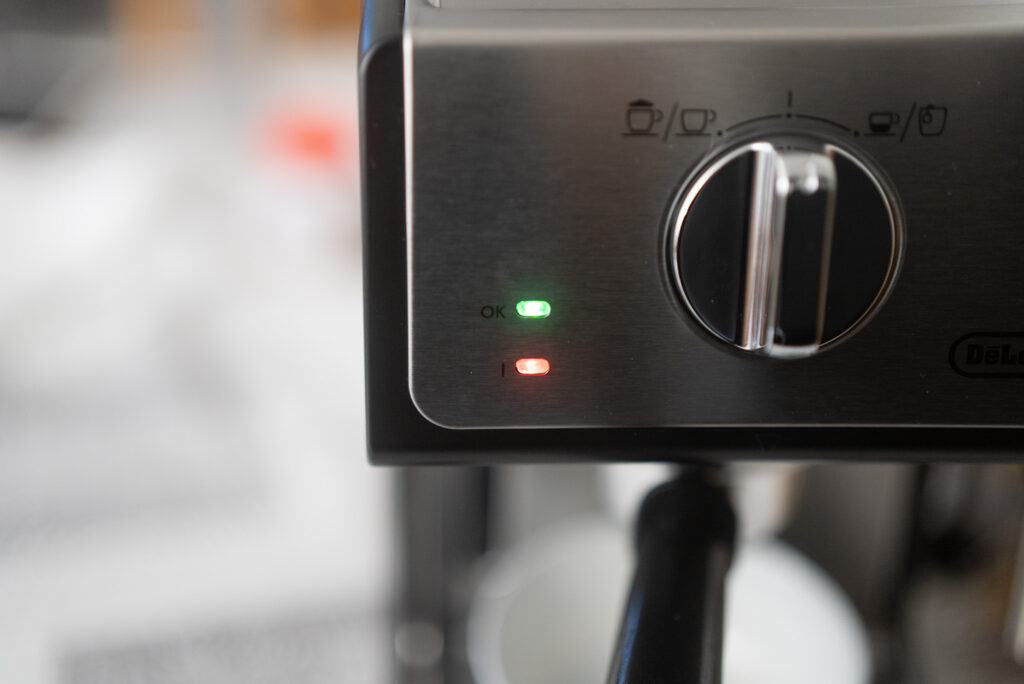
The machine features two LEDs: a green one that indicates the water in the boiler has reached the desired temperature, and another that shows the machine is powered on, I believe. Simple but very effective.
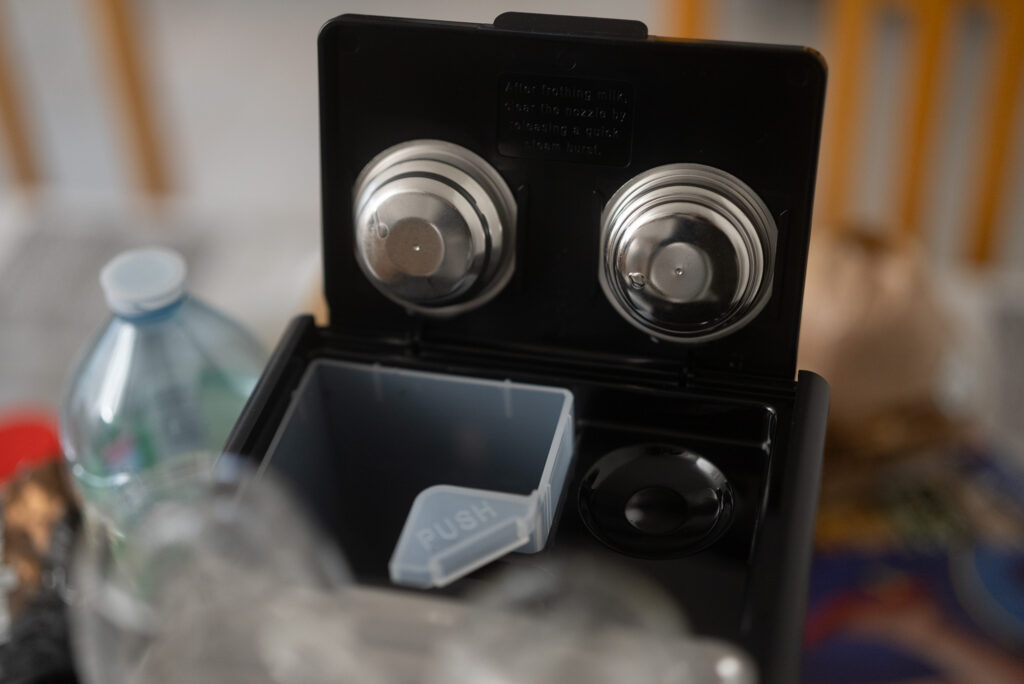
Finally, inside the water compartment, there’s a space and socket to store your different baskets, which is a great feature to help keep them from getting lost.
The performances
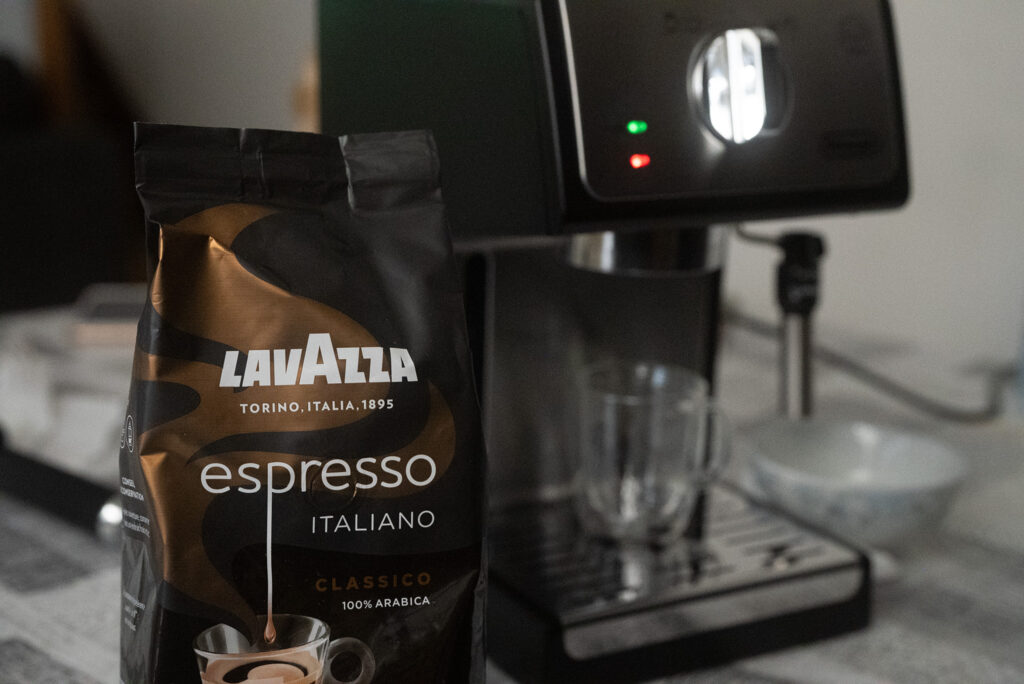
As a beginner in espresso, this was actually my first time brewing an espresso with a manual machine, and it was quite an exciting experience.
I bought a brand-new bag of beans from the supermarket to try and get some crema, since my current coffee beans are getting quite old and oxidized. My approach is to check the expiration date to estimate the roasting date, which works well with Lavazza. I also prefer bags that are not puffed up, as they’re filled with degassed CO2, so I tend to choose the ones that look freshly packed and compact.
We will compare the beginner’s brewing method using the included accessories with the advanced method, which involves using a pressurized basket and additional tools like an unpressurized basket, a better tamper, and more.
The constants
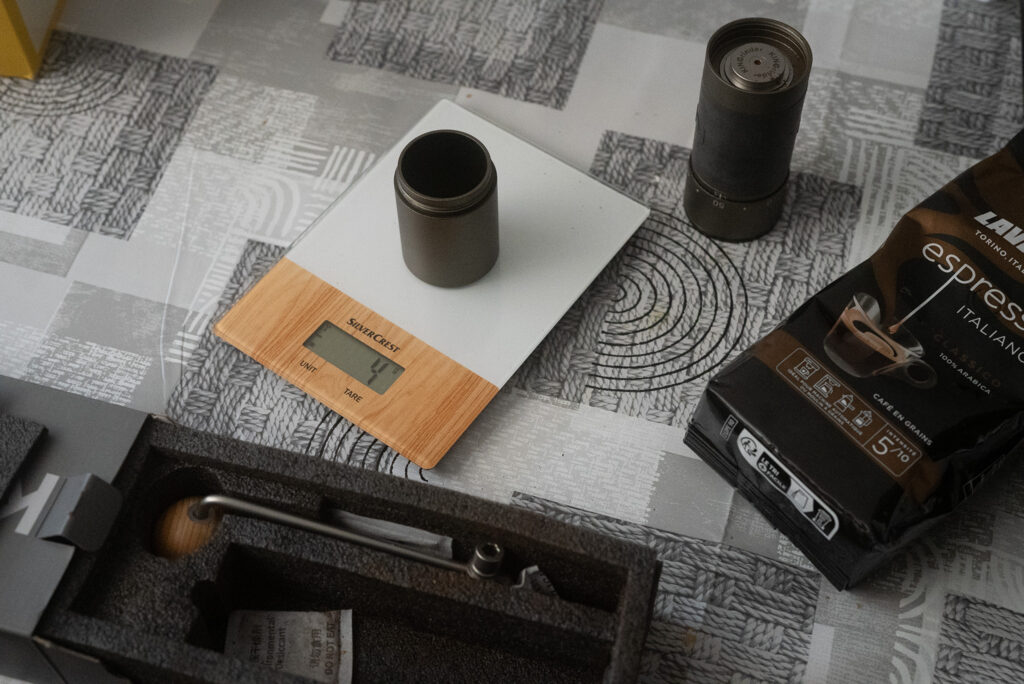
For brewing a double espresso, we will use 14g of Lavazza Espresso Italiano beans, which are made from 100% Arabica and have a medium roast.
We will grind the beans using a KingGrinder K6 set somewhere between 20-40 clicks, as I found on an online forum that this is an ideal range setting for espresso.
Our goal is a 2:1 ratio, so for 14 grams of coffee, we aim for 28 grams of extract liquid. Obviously this machine doesn’t have a three way solenoid valve so we are goigg to ball park it. We will be aiming at a 25 to 30 seconds extraction duration.
The beginner’s method
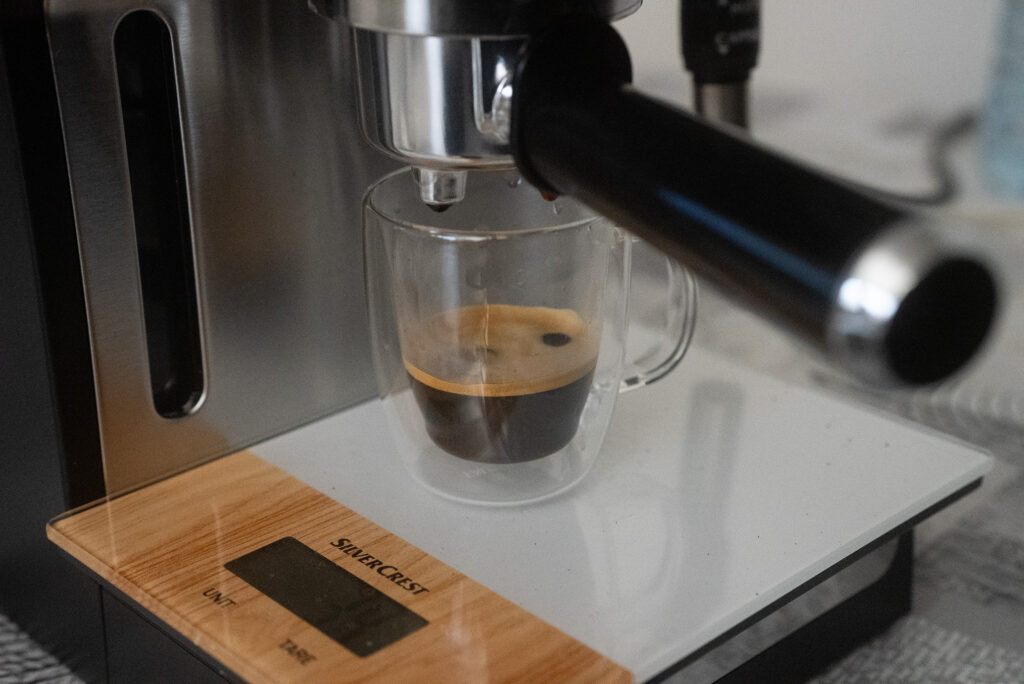
The beginner’s method involves using the included accessories and operating the machine with its factory settings right out of the box.
Fitting 14g into the pressurized double espresso basket was quite messy, and I think a funnel tool would have made this process smoother.
I couldn’t even use the WDT tool, as it would have made a mess everywhere. It’s a bit disappointing, especially since a double espresso typically requires at least 14g of ground coffee. Using a funnel should help.
The scoop tamper worked decently, although it wasn’t the best experience. The puck seemed a bit higher than what I’ve seen in videos, but since this was my first shot, I’ll see how it goes in the future.
After pulling the shot, the machine’s vibrations caused my cup to shift around, requiring me to adjust it several times. I suppose, this is one of the drawbacks of a vibratory pump in a light weight machine.
After stopping the brew at 25g, I expected it to stop shortly after, but it continued pouring until it reached 40g. This means I’ll need to remove the cup and scale simultaneously and accept that some coffee will spill into the drip tray, resulting in more frequent clean-ups.
The crema was present, but it appeared to be somewhat artificial, mostly formed from air, fading within seconds and lacking a rich color, appearing quite pale.
When it comes to the taste, it was quite acid but also very sweet at the same time with a little bit of bitterness. It was much more of a concentrated rich taste than what i am used to using my moka pot. Even with the pressurized filter, I find the taste to be more interesting than what I get from my other coffee brewers, which is really exciting.
The advanced method
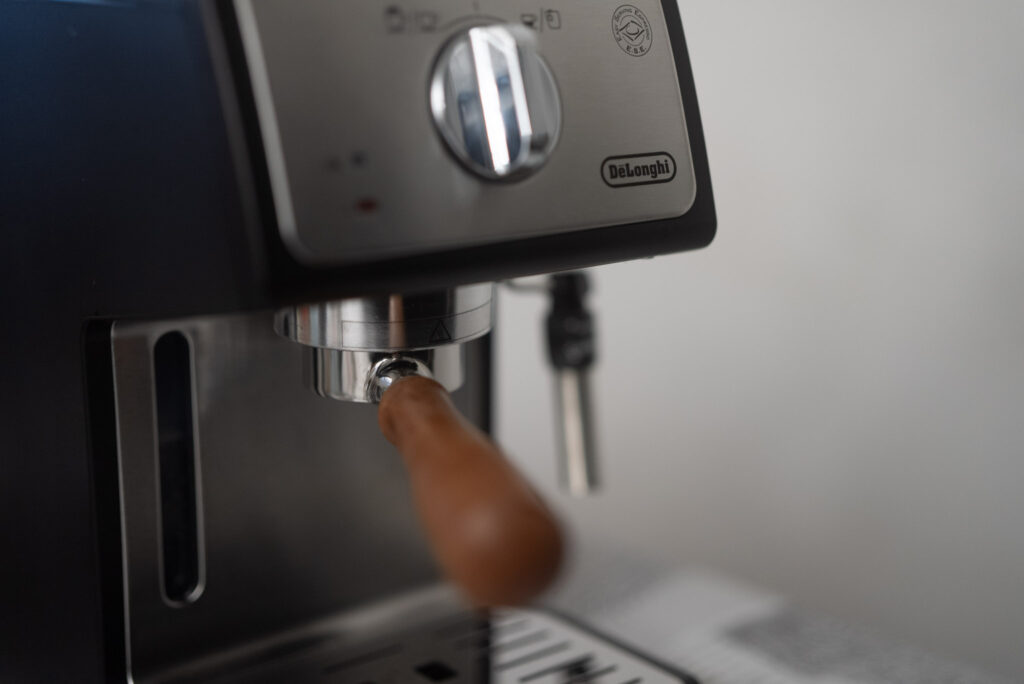
For the advanced method, I will use much more equipment and accessories to get the best possible results using an unpressurized basket.
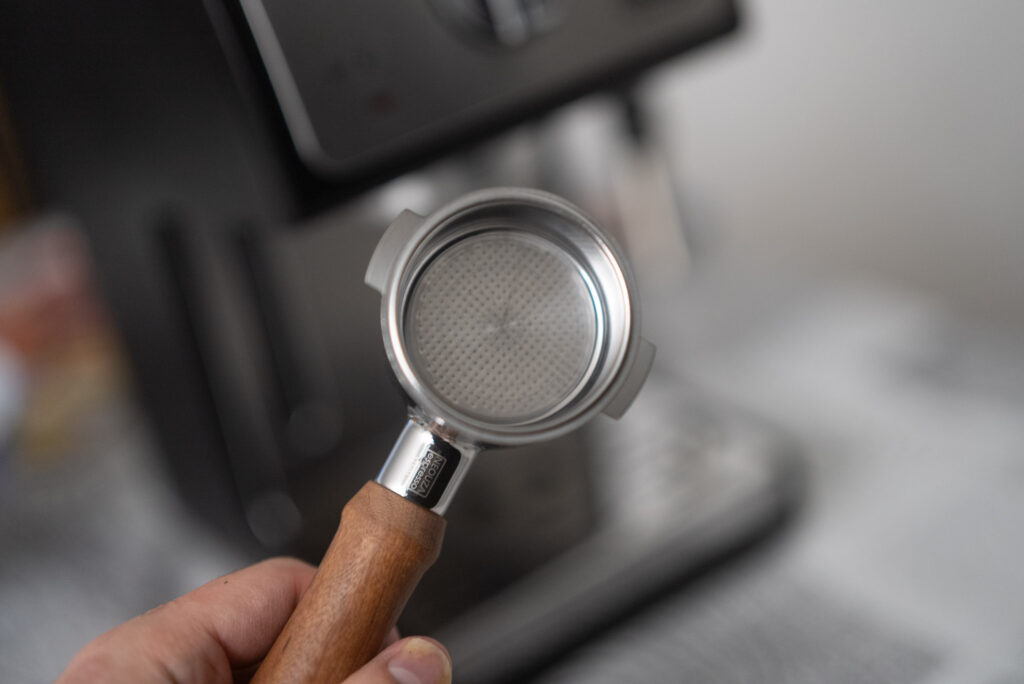
Unpressurized basket means that the puck resistance is going to be the defining factor of the success of the extraction.
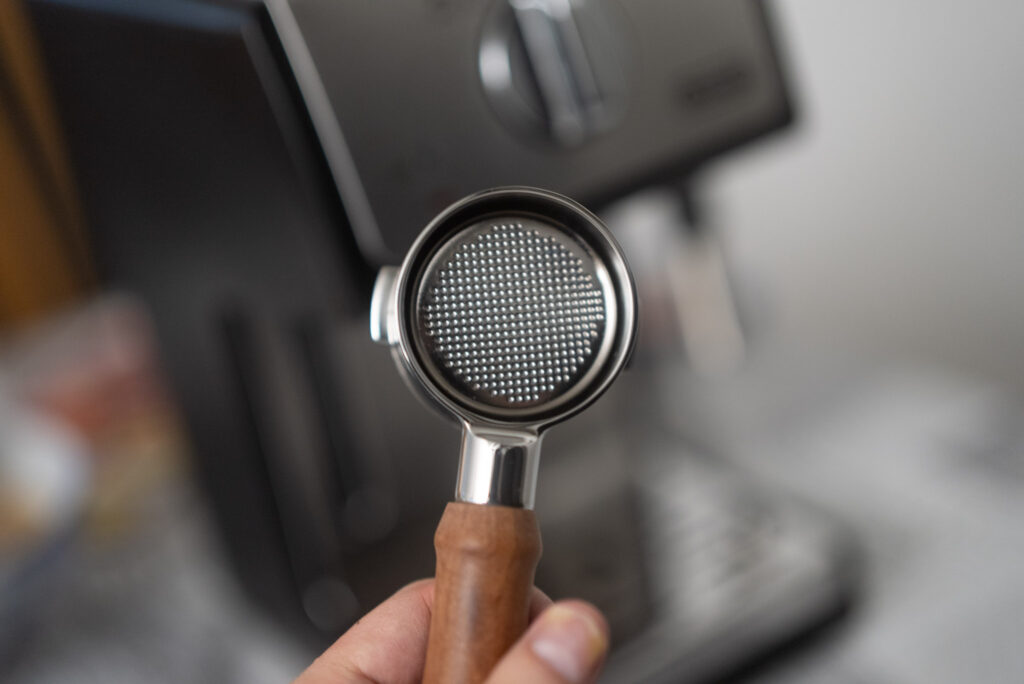
If it’s too loose, it will create channels, leading to uneven under-extraction and flavor. If it’s too packed, it can choke the machine, resulting in an overly long extraction and a bitter, burnt taste.
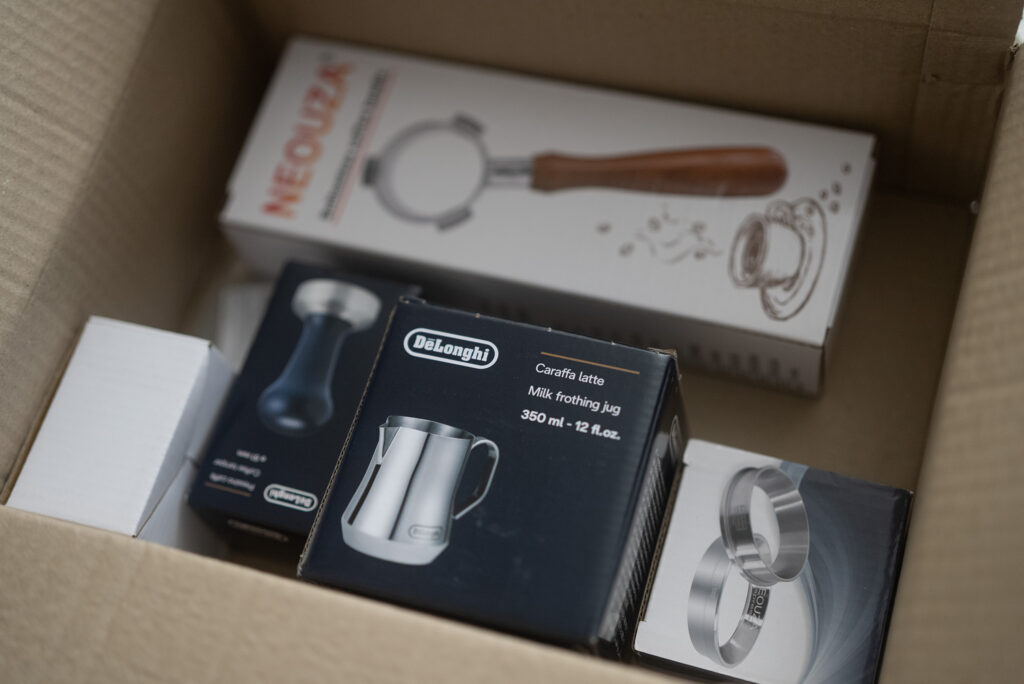
The accessories:
- Neouza 51mm bottomless porta filter
- Neouza 51mm funnel ring
- Aaoclo 51mm Rotating distributor
- Delonghi 51mm Tamper
- 51mm puck screen
- WDT tool
- DeLonghi DSL060 Milk Frothing Jug
- Small water spray
All these accessories set me back about 115 euros, which is crazy considering it’s almost the price of the Delonghi ECP. With these extras, we’re not far from the cost of a Gaggia Pro E24, which still doesn’t include some of these accessories.
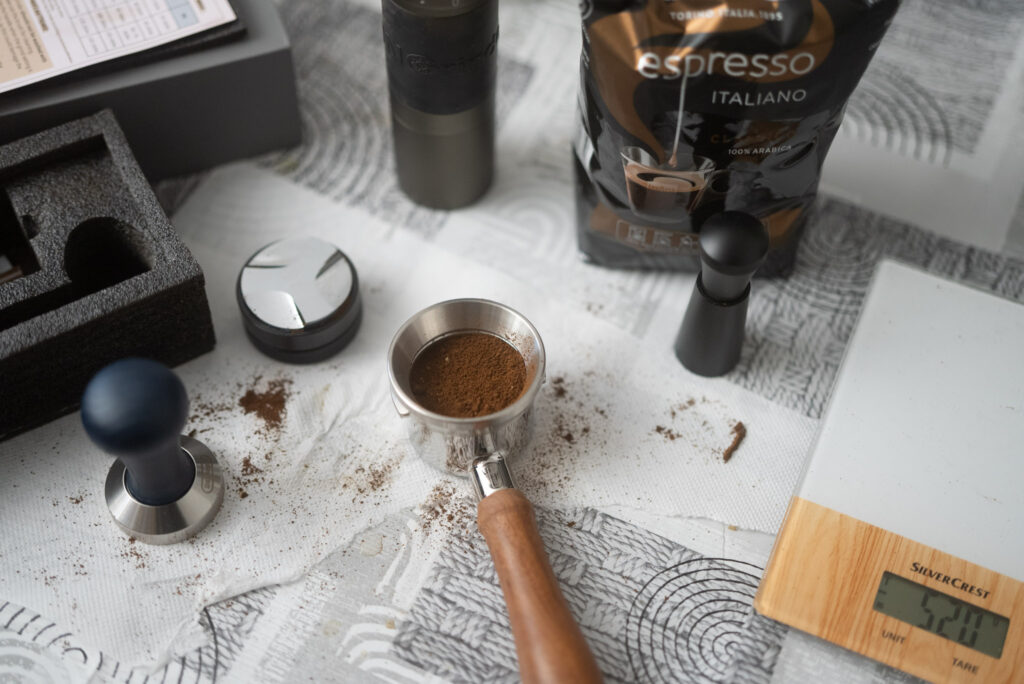
These tools aren’t just to have consistency for your espresso, it’s also a way to enjoy the process. Let’s be honest, we all saw those videos of espresso preparation which are like dance and are absolutely soothing. My wife and I will try to make a video later on.
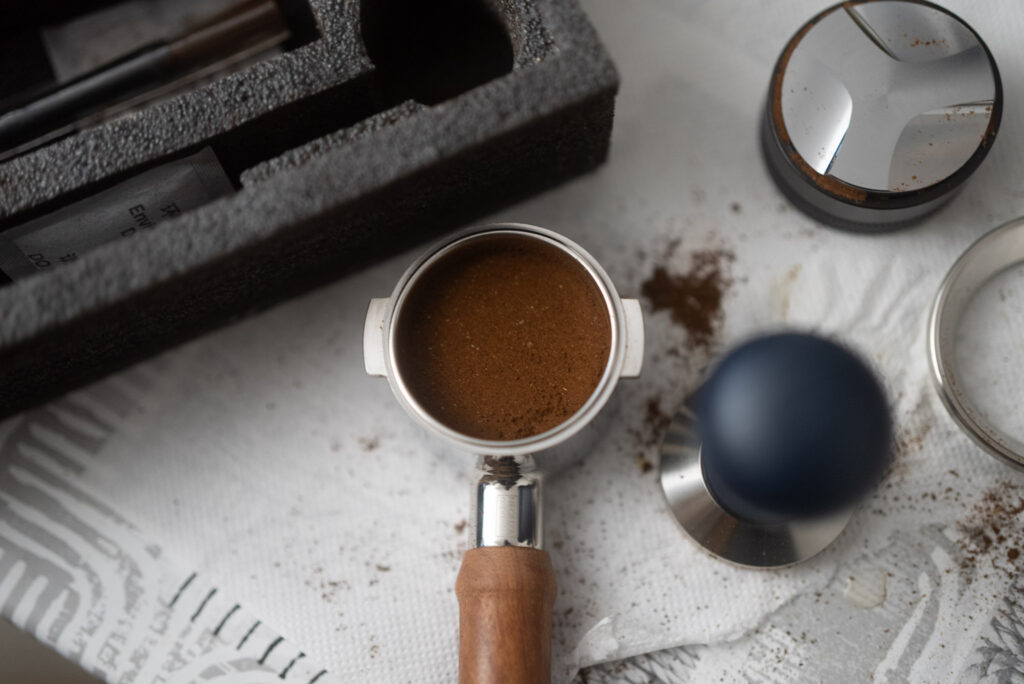
The first thing I’ve learned is that is it incredibly more technical than I thought. My first 3 tries were absolutely disastrous with channeling and coffee spilling onto the machine.
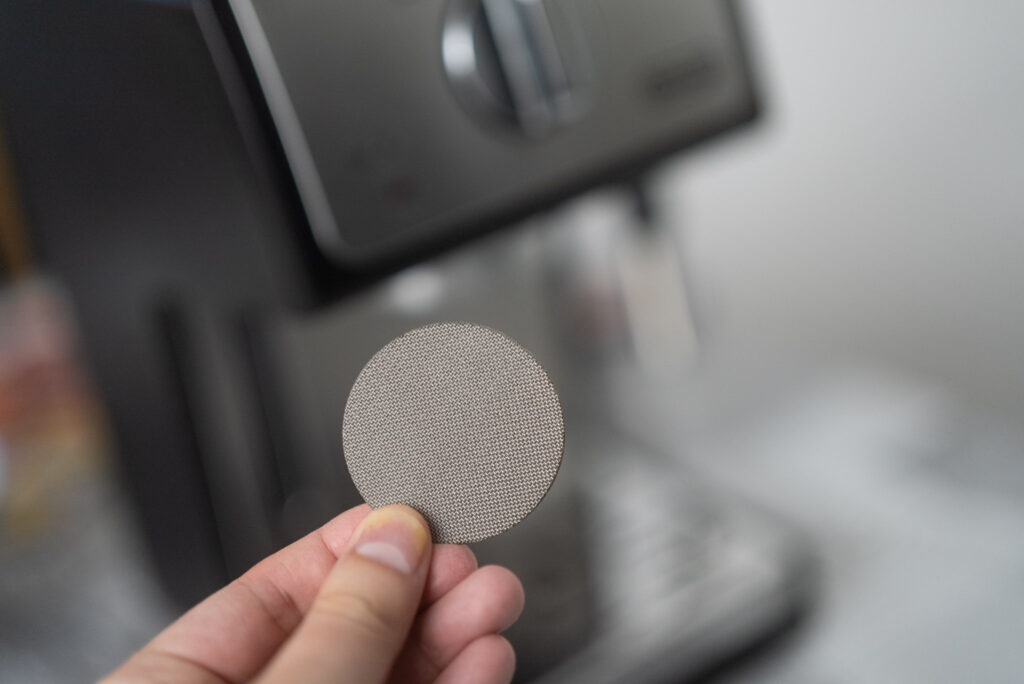
Although I used a puck screen, I’m not sure if it helped or just made things more difficult. One thing is certain—all the tools are essential. Without a funnel, making a mess is inevitable, and even with one, it’s still challenging.
For me, the most difficult part by far was dialing in the right grind size and eliminating clumps, which turned out to be incredibly tricky. Maybe I didn’t dry my basket well enough, causing excessive clumping. I had to use the WDT tool for over five minutes, yet I could still see clumps in the grounds.
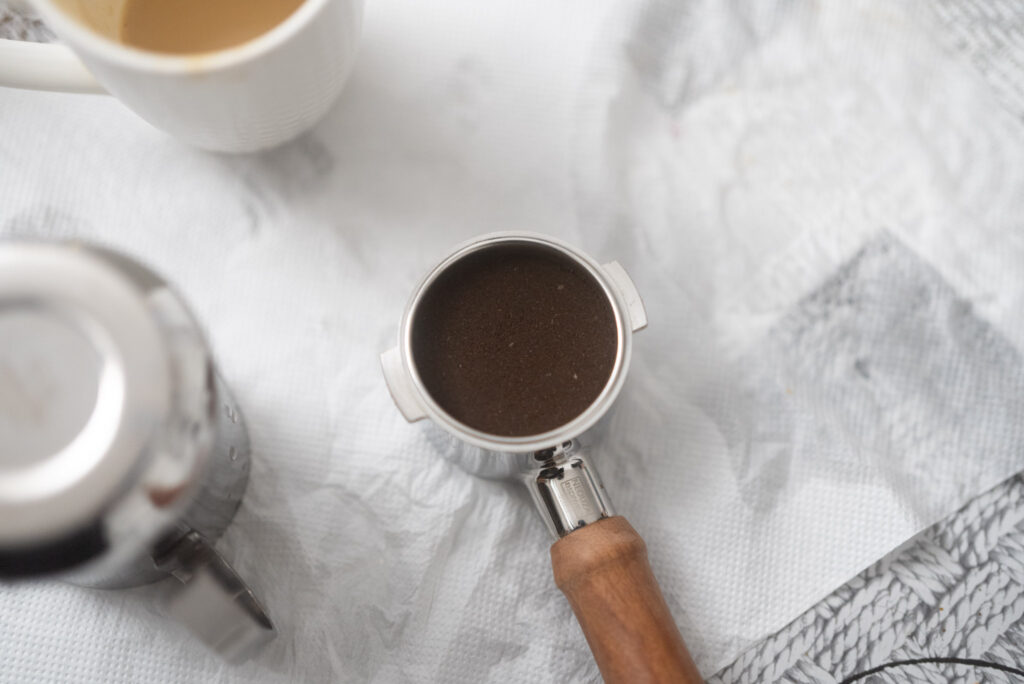
I honestly had no idea what I was doing wrong—I kept wondering if my grind size was too coarse. For my second shot, I tried setting it to 32, which was an improvement, but then I went down to 30, which made things worse.
Both had one thing in common: the extraction was way too fast, around 10 seconds for 40 grams. This led me to suspect that the issue was with my technique. Wanting to make incremental changes to pinpoint the problem, I kept the grind size at 30 and focused on refining my technique, which eventually led to my first decent shot at 30 clicks.
The extraction was still too fast and well under 30 seconds. I think I need to grind finer and am also considering whether spraying water before grinding is necessary to prevent clumps.
The 10-15 second shot wasn’t bad at all—balanced and incredibly strong, far more intense than the one made with the pressurized portafilter. I’m gradually starting to appreciate this burst of flavor, which is so much richer and more intriguing.
Obviously, I can’t consume more than 20 grams of coffee a day if I want to sleep at night, so I had to wait for the following morning for more attempts perhaps this time setting the K6 at 20 clicks. This grind size completely choked the machine.
After many try, Ive found that 28 clicks are perfect to make the espresso at 1:2 ratio within 25-30 seconds, interestingly enough 29 clicks makes a huge difference thats why I understand why people buy dedicated espresso grinder like the KinGrinder K4 with a smaller granularity.
I went with 28 clicks on the KinGrinder K6 and had perfect results when it comes to timing the shot 1:2 ratio within 25 to 30 seconds.
The cleaning process
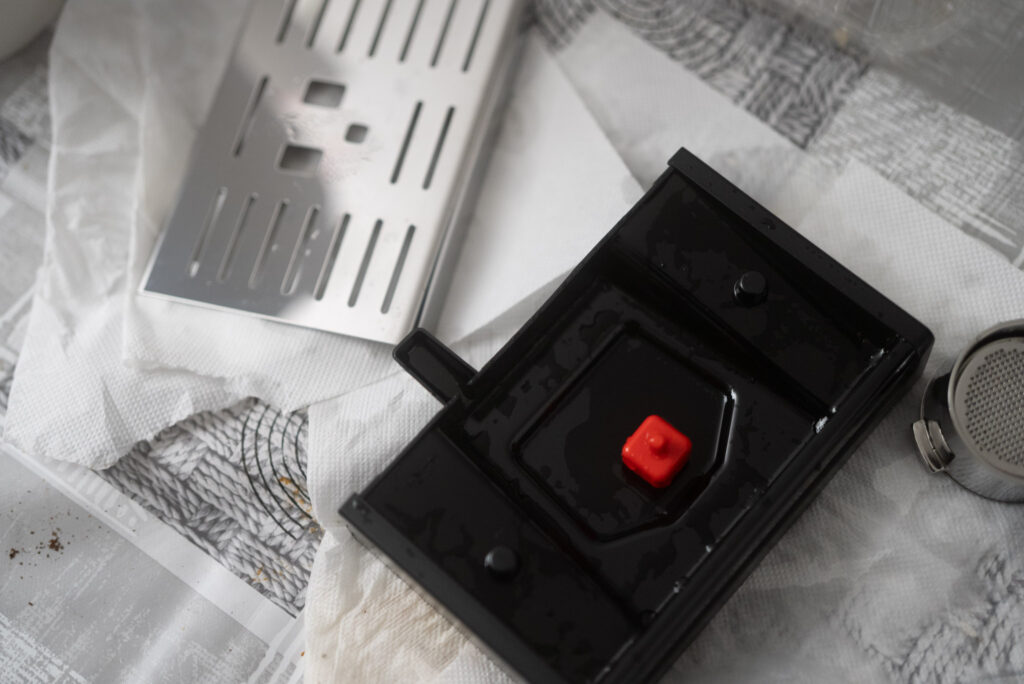
Since it was my first experience, I ended up making quite a mess while trying to brew an espresso. I find the machine relatively easy to clean, though it’s a bit frustrating that both steaming components need to be removed for proper cleaning—an external wipe and purge just aren’t enough.
Anyway, I was thinking that having a machine was going to make my job easier but it actually is quite more work than a moka pot at the moment.
The downsides
This machine isn’t flawless, and considering the price, it’s expected to have some limitations, such as the pressure, which is closer to 12 bars instead of the ideal 9 bars. The only solution to adjust it is to replace the spring with a different one voiding the warranty in the process. It would have been preferable if the factory set the pressure at 9 bars.
Another problem, potentially linked to the pressure, is the difficulty in achieving a perfect extraction without any spraying. I’ve only managed to get it right twice in about thirty attempts, and it was mainly because the beans were either fresh or dark roasted.
The glass shakes significantly due to the vibrations, but this stops once the coffee begins to pour. This means that a glass with a scale moves even more, making it impractical for pulling a shot.
In my opinion, the Panarello wand, like the 12-bar pressure system, is designed for the average consumer using a pressurized basket. While it aims to simplify the process, it ultimately compromises the ability to achieve the best results.
Verdict
8.2 out of 10
If you’re looking to learn how to make espresso at home on a budget, the DeLonghi ECP, along with the Stilosa, are probably your best options.
For an even more affordable approach, you can find them on the used market for around 60 to 80 euros in good condition, as they are widely available and popular.
If you prefer to buy it new for the warranty, I highly recommend this espresso machine—it offers the best value for your money.
The only real downside is the lack of a three-way solenoid valve, which makes stopping the brew with precision a bit tricky, but you wont have to deal with a messy puck and you can manually pre-infuse.
In my view, the only true beginner-friendly options on the market are this DeLonghi ECP and the Gaggia Classic Pro E24.
If you’re on a budget, your choice will depend on whether you prefer to invest in accessories or the machine itself first. However, I can say with confidence that without the right accessories, making a successful espresso is nearly impossible.
Informations
DeLonghi ECP 35.31
Official website: https://www.delonghi.com
Official page: https://www.delonghi.com/en-us/manual-espresso-machine-ecp3420/p/ECP3420
Video Production: https://www.neonnight.fr/en/portfolio/personal-espresso


GIPHY App Key not set. Please check settings